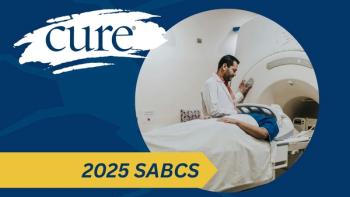
Neurosurgeons Open a Window of Opportunity to Treat Glioblastoma
A recent study where glioblastoma patients underwent laser surgery to kill tumors cells proved to have extra benefits, showing promise to treating the deadly disease.
A significant step has been made that could lead to a better way of treating patients with glioblastoma, the most common, aggressive and deadly type of brain cancer.
A small study, conducted by neurosurgeons at Washington University School of Medicine in St. Louis over a six-month period, has shown some positive results. Fourteen glioblastoma patients underwent laser surgery to kill tumors cells, but in that process the laser probe also broke the blood-brain barrier in each patient.
“We strongly suspected it when we saw the earlier imaging findings of this treatment and then we confirmed it with some very rigorous imaging and blood protein tests,” says co-corresponding author Eric C. Leuthardt, a Washington University professor of neurosurgery who treats patients at Barnes-Jewish Hospital. “It is a surprising finding in the sense that it’s nice that now you get this therapy that kills a tumor, but also enhances the delivery of chemotherapy.”
The laser treatment kept the blood-brain barrier open for about four weeks, adds Leuthardt, giving brain surgeons the opportunity to deliver chemotherapy drugs to the patients without being blocked. These patients were closely watched for six weeks. After treatment, the neurosurgeons got enhanced imaging and took blood tests every two weeks. By taking blood, they were able to see if proteins that normally don’t enter the bloodstream were present.
These results could help in the future treatment of patients with glioblastoma, but no one is sure how widely it may be used just yet.
“We now have created a window for new therapies that the blood-brain barrier is a big impediment to — getting various types of chemotherapy, various types of drugs to treat the tumor — and so now that we have opened this door, this window of opportunity, we can potentially give a lot of new agents that otherwise might not have been available to effectively treat the tumor,” explains Leuthardt.
Leuthardt and his colleagues are being cautious and are following patients closely. They have also begun enrollment for a phase 2 trial. Currently, he says they are about halfway done in enrolling the 40 patients who will take part in this trial.
Looking further ahead, Leuthardt calls the breaking down of the blood-brain barrier a two-way street. “Certainly we were talking about the blood-brain barrier to get things into the brain, but I think the other thing that’s really important to know is that opening that blood brain barrier also potentially helps expose the brain to the body — in a sense, the immune system,” he says.
“We have another trial that’s just getting underway where we are using the laser to enhance immunotherapy for brain tumors. [B]ecause the laser breaks down the blood-brain barrier, now that the tumor is better exposed to the systemic immune system, [it allows] the immune system to fight the cancer.”





